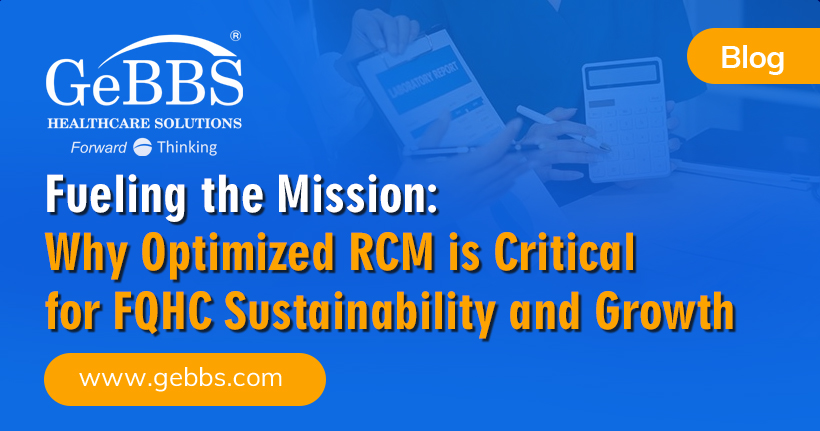Healthcare providers are increasingly recognizing the need for comprehensive Patient Contact Solutions to enhance patient engagement, improve outcomes, and streamline operational efficiency. This blog explores the transformative power of advanced patient contact strategies and technologies in modern healthcare settings.
The Evolving Landscape of Patient Communication
Healthcare communication has come a long way from traditional methods like phone calls and paper mailings. With the advent of digital technologies, patient contact solutions have expanded to include a wide array of channels and tools. These advancements are not just about convenience; they’re reshaping the entire patient experience and driving better health outcomes. The digital era has ushered in new possibilities for patient engagement. From automated appointment reminders to personalized health education content, digital tools are enabling healthcare providers to maintain consistent and meaningful contact with their patients. This shift is not only improving patient satisfaction but also contributing to better adherence to treatment plans and preventive care schedules.
Multichannel Communication Strategies
Modern patient contact solutions embrace a multichannel approach, recognizing that patients have diverse preferences for how they receive information. While some patients may prefer traditional phone calls, others might opt for text messages, emails, or even mobile app notifications. By offering a variety of communication channels, healthcare providers can ensure that important messages reach patients in the most effective and convenient way possible.
Key Components of Effective Patient Contact Solutions
To truly revolutionize patient communication, healthcare organizations need to implement comprehensive solutions that address various aspects of patient engagement.
1. Appointment Management Systems:
Advanced appointment management systems go beyond simple scheduling. They incorporate features like automated reminders, easy rescheduling options, and pre-appointment instructions. These systems not only reduce no-show rates but also help in optimizing clinic schedules, leading to improved operational efficiency.
2. Telemedicine Integration:
The rise of telemedicine has been a game-changer in patient contact solutions. Integrating video consultations and remote monitoring capabilities into communication platforms allows for more frequent and convenient patient-provider interactions. This is particularly beneficial for managing chronic conditions and providing follow-up care without the need for in-person visits.
3. Personalized Health Education:
Effective patient contact solutions include tools for delivering personalized health education content. By leveraging patient data and AI-driven analytics, these systems can provide tailored information about conditions, treatments, and preventive measures. This personalized approach not only improves patient understanding but also encourages active participation in their own healthcare journey.
4. Enhancing Patient Engagement Through Technology:
The ultimate goal of patient contact solutions is to foster deeper engagement between patients and their healthcare providers. This engagement is crucial for improving health outcomes and patient satisfaction.
5. AI and Machine Learning in Patient Communication:
Artificial Intelligence (AI) and Machine Learning (ML) are revolutionizing patient contact solutions. These technologies can analyze vast amounts of patient data to predict health trends, identify at-risk patients, and suggest personalized intervention strategies. AI-powered chatbots and virtual assistants are also becoming increasingly sophisticated, providing instant responses to patient queries and triaging urgent cases.
6. Mobile Health Applications:
Mobile health apps have become an integral part of patient contact solutions. These apps can serve as a central hub for patient-provider communication, offering features like secure messaging, appointment scheduling, medication reminders, and access to health records. The convenience and accessibility of mobile apps make them particularly effective in promoting ongoing patient engagement.
Overcoming Challenges in Implementation
While the benefits of advanced patient contact solutions are clear, implementing these systems can present challenges for healthcare organizations.
- Data Security and Privacy Concerns:
As patient communication becomes increasingly digital, ensuring the security and privacy of sensitive health information is paramount. Healthcare providers must invest in robust cybersecurity measures and comply with regulations like HIPAA to protect patient data.
2. Integration with Existing Systems:
Many healthcare organizations face the challenge of integrating new patient contact solutions with their existing electronic health record (EHR) systems and other IT infrastructure. Seamless integration is crucial for ensuring data consistency and operational efficiency.
3. Addressing the Digital Divide:
While digital solutions offer numerous advantages, it’s important to recognize that not all patients have equal access to or comfort with technology. Effective patient contact strategies must include provisions for patients who prefer traditional communication methods or lack access to digital tools.
Critical Questions for Healthcare Providers as Year-End Approaches
As we approach the end of the year, healthcare providers should be asking themselves crucial questions about their patient contact strategies:
- Are our current communication methods meeting patient expectations?
It’s essential to assess whether your existing patient contact solutions align with the evolving preferences and needs of your patient population. Are you offering the right mix of communication channels?
2. How can we leverage data to improve patient engagement?
Consider how you can better utilize patient data to personalize communications and improve the overall patient experience. Are there untapped opportunities in your existing data sets?
3. What are our biggest communication pain points, and how can technology address them?
Identify the areas where patient communication breaks down and explore how advanced technologies like AI and automation can help bridge these gaps.
3. How prepared are we for future communication challenges?
Reflect on your organization’s ability to adapt to new communication technologies and changing patient expectations. Are your systems flexible enough to incorporate emerging technologies?
3. Are we effectively measuring the impact of our patient contact initiatives?
Evaluate your metrics for assessing the effectiveness of your communication strategies. Are you tracking the right KPIs to demonstrate ROI and patient satisfaction improvements?
4. How can we better integrate patient feedback into our communication strategies?
Consider implementing more robust feedback mechanisms to ensure your patient contact solutions are continuously improving based on real patient experiences.
5. What steps can we take to ensure equitable access to our communication channels?
Assess how you’re addressing the digital divide and ensuring that all patients, regardless of their technological proficiency, can effectively communicate with your organization.
By critically examining these questions, healthcare providers can position themselves to enhance their patient contact solutions, improve patient outcomes, and stay competitive in an increasingly digital healthcare landscape.
Conclusion: Embracing the Future of Patient Communication
In an era where patient-centered care is paramount, advanced patient contact solutions are no longer a luxury but a necessity. These technologies and strategies have the power to transform healthcare delivery, improving patient outcomes, satisfaction, and operational efficiency.
As we look to the future, it’s clear that the most successful healthcare organizations will be those that embrace innovative patient contact solutions. By leveraging these tools to create more personalized, efficient, and engaging patient experiences, healthcare providers can build stronger relationships with their patients and deliver higher quality care.
At GeBBS Healthcare Solutions, we understand the critical role that effective patient communication plays in the overall healthcare ecosystem. Our expertise in healthcare technology and revenue cycle management positions us uniquely to support healthcare providers in implementing and optimizing patient contact solutions. By partnering with GeBBS, healthcare organizations can navigate the complexities of modern patient communication, ensuring that they stay at the forefront of patient care innovation.
Together, we can build a future where seamless, personalized patient communication is the standard, not the exception, in healthcare delivery.






